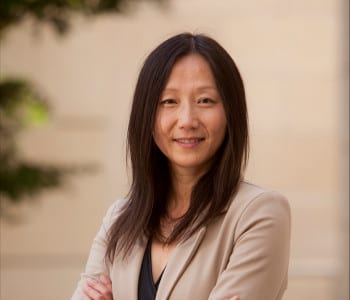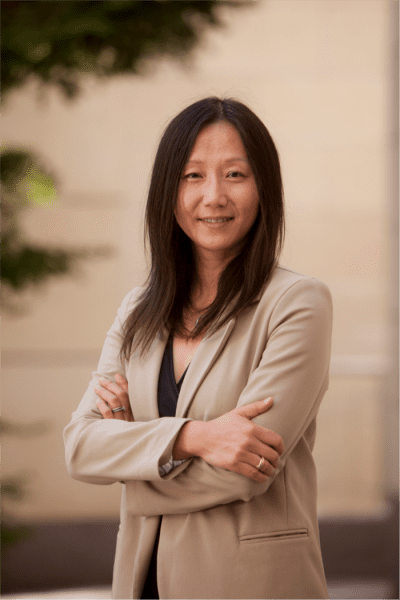She seemed destined to be in the forefront of scientific developments. Born and raised in the home of two scientists, Zhenan Bao first studied Chemistry at Nanjing University and later in The University of Chicago, after which she worked at the Bell Labs, Lucent Technologies and Stanford University. From early on, she established herself as a scientist of the most promising kind, and became the leader of research in organic electronics at Stanford University, where she now acts as a Professor of Chemical Engineering and by courtesy Professor of Chemistry and Professor of Materials Science and Engineering. Through her groundbreaking work, she has received numerous awards and honors.
Working closely and drawing inspiration from students, she has produced outstanding contributions in a wide range of fields, from solar cells to flexible, organic electronics, and her work is a used as a reference in the field of organic thin film transistors. Presently, most of her efforts are devoted to the development of skin-mimicking electronic materials.
On the occasion of the 25th anniversary of Advanced Materials and to celebrate the addition of Professor Bao to the star-studded Editorial Advisory Board of the journal, we questioned her on her life story, achievements and aspirations.
Read Zhenan Bao in the first person on:
… her upbringing and early interest in science
“My parents have been a major part in shaping me as to who I am currently. As they are both professors themselves back in China (in the field of Physics and Chemistry), I was taught how to question every observable phenomena and how to derive possible answers in a logical manner. My passion for science and engineering has persisted, owing to my numerous talented colleagues both here in Stanford and external collaborators. Of course, I am highly indebted to all my inspiring students over the last two decades.”
“Being trained as a polymer chemist, I was fortunate to join Bell Labs after graduation. My interactions with my numerous talented colleagues in Bell Labs allowed me to apply my background in organic small molecules and polymers to the field of electronics. I have been immersed in the field of Organic Electronics ever since.”
… her main fields of interest
“Based on my research expertise in organic electronics, one current research aims is to develop electronic-skin that is akin, even surpassing, the functionalities of human skin. This concept has inspired us to report one of the first biodegradable electronics, self-healing electronics, and skin-inspired health monitoring electronics.”
… on the major scientific achievements in her career
“Discovery of high mobility for the first time in conjugated polymers, specifically regioregular poly(3-hexylthiophene).
Demonstration of the first all-printed plastic transistors.
Demonstration of the first flexible electronic paper.
Large scale patterning of organic semiconductor single crystals and single crystalline films.
Discovery of strained organic semiconductors and demonstration of unprecedented charge carrier mobility in strained organic semiconductors.
Demonstration of a theory-guided screening method for high mobility organic semiconductors.
Sorting of semiconducting carbon nanotubes using surface sorting and regioregular poly(3-dodecylthiophene).
Demonstration of the first all-carbon solar cell, in which both electrodes and active materials are made from carbon.
Demonstration of various essential components for electronic skin: ultrasensitive touch sensor, flexible temperature sensor, water-stable chemical and biological sensor, biodegradable electronics, stretchable electrodes, stretchable solar cell, self-healing electronic skin.”
… future paths
“Future electronics will have different form factors from those we are using today. Future electronics will have more intuitive and seamless interface with human being. In order to do that, we need to develop new electronic materials that are intrinsically flexible and stretchable. I want to develop new materials that will address the above future challenges.”
… on her motivation to join the Editorial Advisory Board of Advanced Materials
“For the past two decades, Advanced Materials has been a journal that I regularly contribute to and, more importantly, enjoyed reading. The published articles are highly important to keep me abreast of the latest happenings in my research field. Hopefully, being a part of the Advanced Materials Editorial Board, I can contribute to shaping the direction and contents of this journal in order to appeal to a wider audience.”
Professor Bao is a frequent contributor to Advanced Materials, Advanced Functional Materials, Advanced Energy Materials and Small. She was part of the International Advisory Board of Advanced Functional Materials and is presently also in the Editorial Advisory Board of the rather young but already successful journal Advanced Energy Materials.
For more information on Zhenan Bao visit her profile page at Stanford University and the homepage of her research group.


















